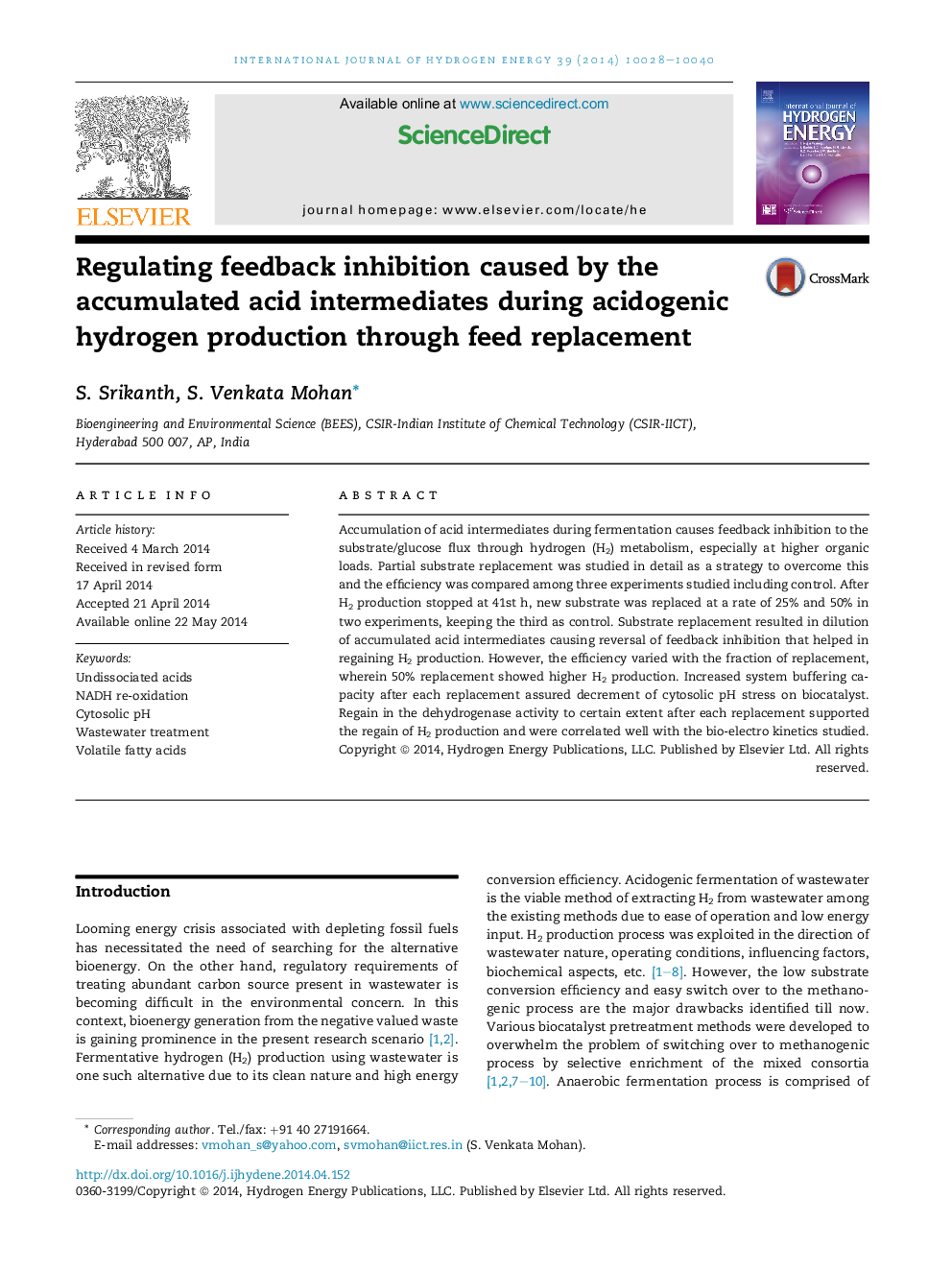| Article ID | Journal | Published Year | Pages | File Type |
|---|---|---|---|---|
| 1270355 | International Journal of Hydrogen Energy | 2014 | 13 Pages |
•Substrate replacement was evaluated as a strategy to overcome the feedback inhibition.•50% of substrate replacement showed more positive impact over 25% replacement.•Dehydrogenase activity was also regained with each substrate replacement.•Buffering capacity and bio-electrochemical profiles also well correlated.•Mechanism of feedback inhibition was illustrated and interpreted with results.
Accumulation of acid intermediates during fermentation causes feedback inhibition to the substrate/glucose flux through hydrogen (H2) metabolism, especially at higher organic loads. Partial substrate replacement was studied in detail as a strategy to overcome this and the efficiency was compared among three experiments studied including control. After H2 production stopped at 41st h, new substrate was replaced at a rate of 25% and 50% in two experiments, keeping the third as control. Substrate replacement resulted in dilution of accumulated acid intermediates causing reversal of feedback inhibition that helped in regaining H2 production. However, the efficiency varied with the fraction of replacement, wherein 50% replacement showed higher H2 production. Increased system buffering capacity after each replacement assured decrement of cytosolic pH stress on biocatalyst. Regain in the dehydrogenase activity to certain extent after each replacement supported the regain of H2 production and were correlated well with the bio-electro kinetics studied.
Graphical abstractFigure optionsDownload full-size imageDownload as PowerPoint slide
